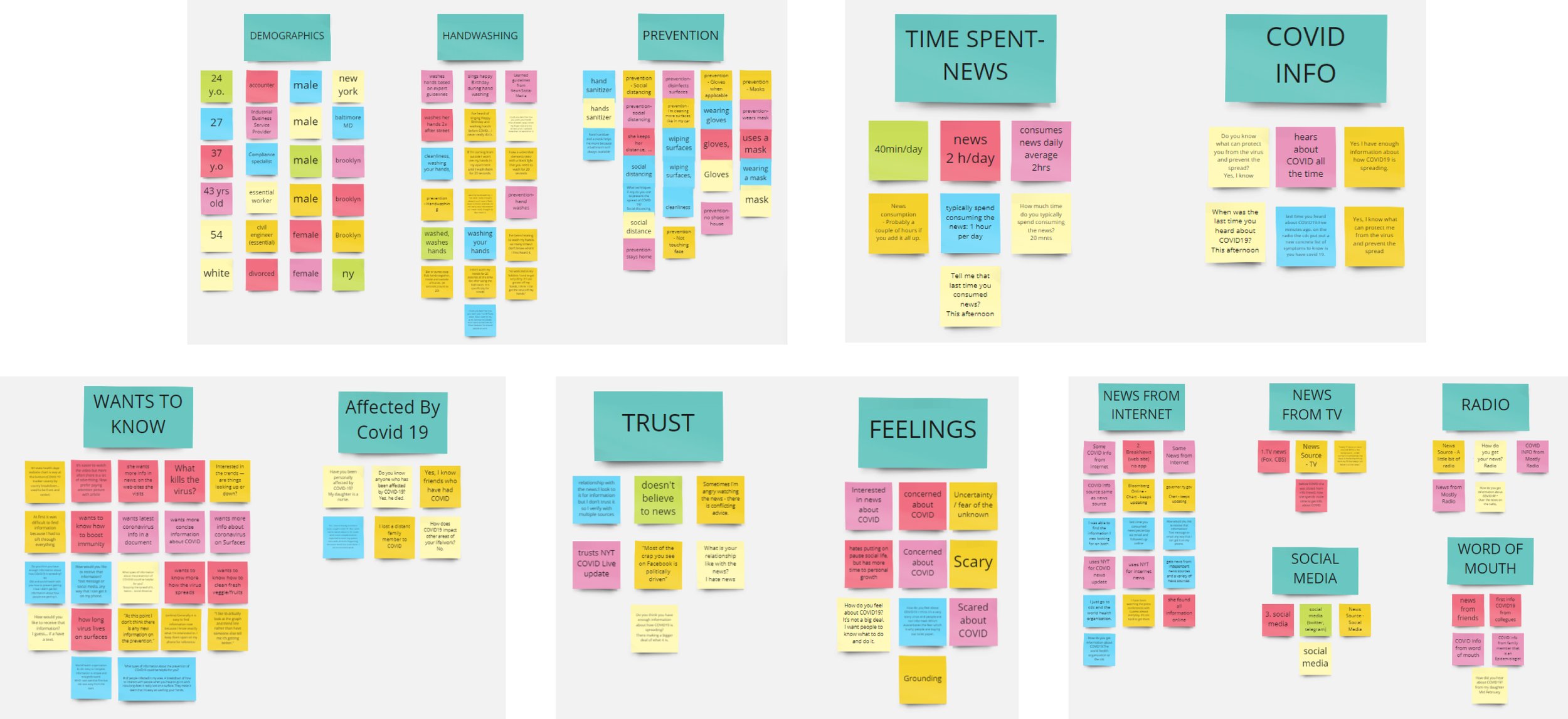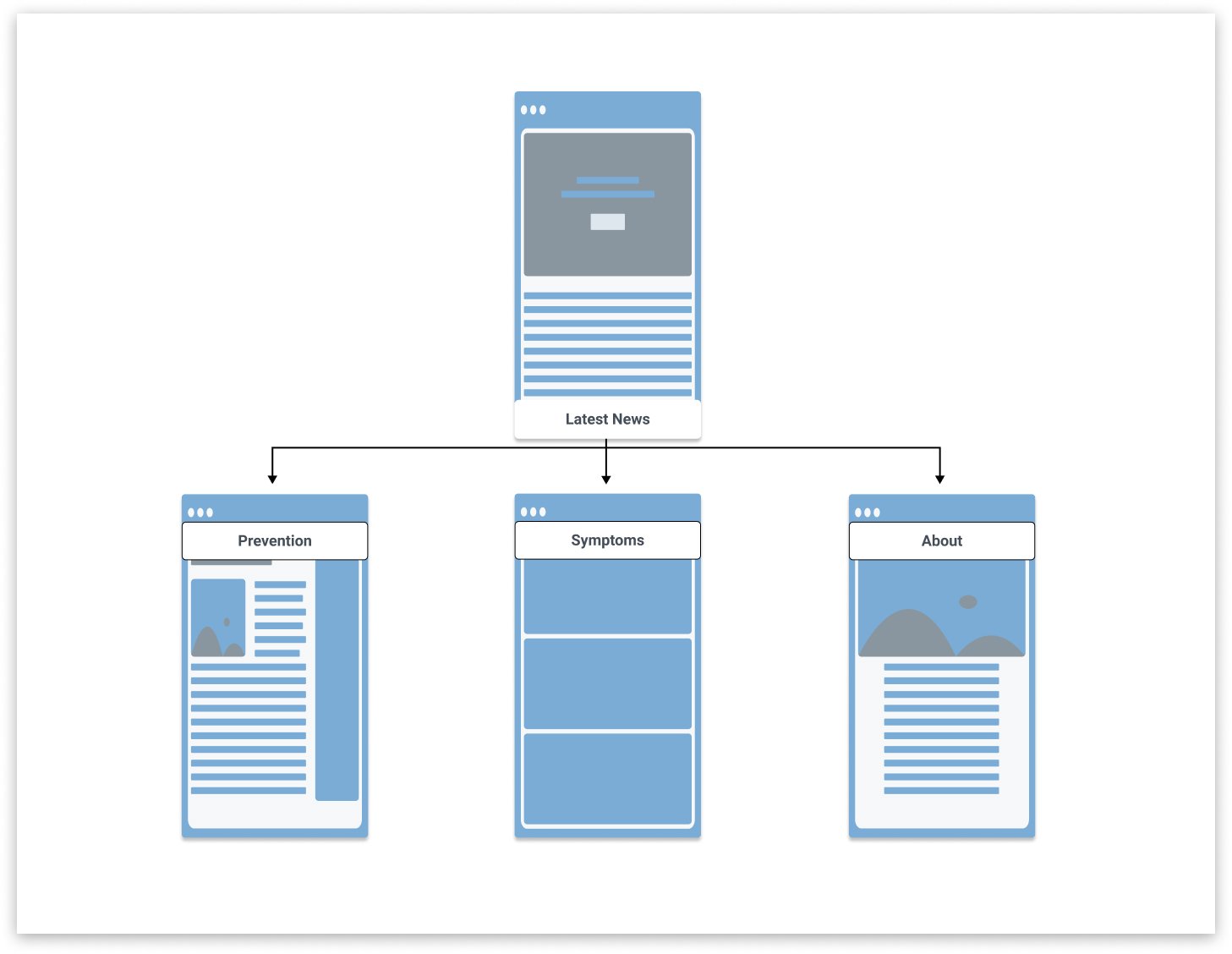Timeline
3 Days May 2020
My Role
UX Architecture, UX/UI Designer, UX Researcher
The Problem
This was a Kingsborough 3 day design challenge. Students were given 5 Uplabs challenges to choose from. My team chose the Covid-19 Prevention Design Challenge which was to make a hand-washing illustration and include some text descriptions to create a unique infographic. We took this challenge and applied UX principles to discover the needs of users during the pandemic.
Through our research we discovered that the real problem people faced was that they found it difficult to find up-to-date trustworthy Covid-19 news. .
User Interviews
Below is a list of a few of our interview questions and the results:
Do you think you have enough in Covid-19 is spreading?
Do you know what can protect you from the virus and prevent the spread?
What techniques if any do you use to prevent the spread of Covid-19
Could you describe how you wash your hands?
User Survey
The online user survey was a vital part of our discovery process because it provided a more representative sample of the larger population. The survey was developed using Google Forms and distributed via Facebook, LinkedIn and email. There were 237 respondents. You can use this layout block to write as much or little as you’d like. It’s basically a standard text block for anything text related.
Findings
More than 85% washed their hands for 20 seconds as a method to prevent the spread of Covid-19. Less than 40% of the participants found information on the prevention of Covid-19 to be very clear. Less than 40% also found it very easy to find trustworthy information about the spread of Covid-19 very easy. We discovered that most of the people surveyed learned how to prevent the spread of the corona-virus via social media and online news publication.
Upon analyzing the data from the user interviews and the user survey it was made clear that we were addressing the wrong problem. Individuals understood how to properly wash their hands and they understood the steps they needed to take to prevent the spread of Covid-19. Users were frustrated by the different corona-virus updates from various news networks and social media platforms. They found it difficult to find up to date trustworthy corona-virus news.
Original Problem:
How might we communicate to people how to wash their hands properly to help stop the spread of Covid-19?
New Problem:
How might we design a solution that consolidates clear and trustworthy information in order to help people feel more easily informed about Covid-19 prevention?
COMPETITIVE ANALYSIS + THE GAP
Based on the discovery of what the true problem was we performed a competitive analysis to better understand how covid-19 news was delivered. Through our competitive analysis we observed that there weren’t any media sources that were solely dedicated to covid-19 updates and information.
User Persona + User Journey
Ideation & Brainstorming
We held a brainstorming session on how to present covid-19 information to users as well as what information would be valuable to them based on the data. You can use this layout block to write as much or little as you’d like. It’s basically a standard text block for anything text related.
User Flow & Site Map
We created a user flow and site map based on the primary objective of providing people with preventative information.
Usability Testing + Improvements
Low Fidelity Prototype
Through testing we discovered that having the prevention page as the main page of the app caused confusion in people. When using the website users reviewed the prevention techniques on the main page and stopped exploring.
Updated Site Map based on the results of the usability test
The Execution
Bringing It All To Life
Latest News became the main page of the mobile version of the app. You can play with the prototype. right over here. 🙌
Desktop Prototype
Reflection + Next steps
When reflecting on our process, we discovered that there is the potential that our biases got in the way of collecting different and potentially important data. Our fears of wanting to be sensitive to our survey participants led us to leave out questions about race, gender and income. This may have skewed our data into a hyper specific demographic. So, the next steps would be to gather more data exploring demographics such as race, socioeconomic status and gender then test it against what we have already discovered.
























